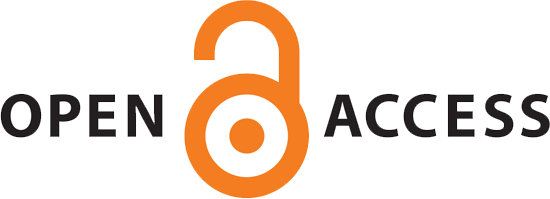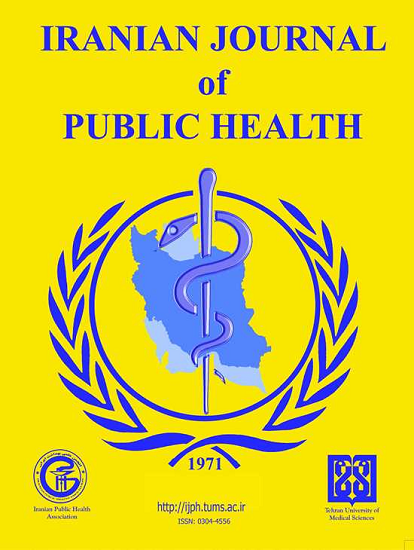The Influence of Clinical and Environmental Risk Factors in the Etiology of Congenital Sensorineural Hearing Loss in the Romanian Population
Abstract
Abstracts Abstracts Abstracts
1. Sasanfar R, Toloui A, Hoseinipour A, et al (2004). Frequency of a very rare 35delG mutations in two ethnic groups of Irani-an populations. Iran J Public Health, 33(4): 26-30.
2. Bostan I (2016). Investigating the Effective-ness of Programs on Health Financing Based on Audit Procedures. Iran J Public Health, 45(8): 1074-1079.
3. Abdurehim Y, Lehmann A, Zeitouni AG (2017). Predictive value of GJB2 mutation status for hearing outcomes of pediatric cochlear implantation. Otolaryngol Head Neck Surg, 157:16–24.
4. Naseri M, Akbarzadehlaleh M, Masoudi M, et al (2018). Genetic Linkage Analysis of DFNB4, DFNB28, DFNB93 Loci in Au-tosomal Recessive Non-syndromic Hear-ing Loss: Evidence for Digenic Inher-itance in GJB2 and GJB3 Mutations. Iran J Public Health, 47(1): 95-102.
5. Palmer CGS, Lueddeke JT, Zhou J (2009). Factors influencing parental decision about genetics evaluation for their deaf or hard-of-hearing child. Genet Med, 11(4): 248–255.
6. Lazăr C, Popp R, Trifa A, et al (2010). Preva-lence of the c.35delG and pW24X muta-tions in the GJB2 gene in patients with nonsyndromic hearing loss from North-West Romania. Int J Pediatr Otorhinolaryn-gol, 74(4): 351-355.
7. Totolin M. Modern, clinical, audiological, and ge-netic methods to investigate congenital neurosensory hypocausts [PhD thesis]. Carol Davila Uni-versity of Medicine and Pharmacy, Ro-mania; 2011.
8. Neagu A. Genetic and clinical study in congenital non-syndromic neurosurgery [PhD thesis]. Carol Davila University of Medicine and Pharmacy, Romania; 2013.
2. Bostan I (2016). Investigating the Effective-ness of Programs on Health Financing Based on Audit Procedures. Iran J Public Health, 45(8): 1074-1079.
3. Abdurehim Y, Lehmann A, Zeitouni AG (2017). Predictive value of GJB2 mutation status for hearing outcomes of pediatric cochlear implantation. Otolaryngol Head Neck Surg, 157:16–24.
4. Naseri M, Akbarzadehlaleh M, Masoudi M, et al (2018). Genetic Linkage Analysis of DFNB4, DFNB28, DFNB93 Loci in Au-tosomal Recessive Non-syndromic Hear-ing Loss: Evidence for Digenic Inher-itance in GJB2 and GJB3 Mutations. Iran J Public Health, 47(1): 95-102.
5. Palmer CGS, Lueddeke JT, Zhou J (2009). Factors influencing parental decision about genetics evaluation for their deaf or hard-of-hearing child. Genet Med, 11(4): 248–255.
6. Lazăr C, Popp R, Trifa A, et al (2010). Preva-lence of the c.35delG and pW24X muta-tions in the GJB2 gene in patients with nonsyndromic hearing loss from North-West Romania. Int J Pediatr Otorhinolaryn-gol, 74(4): 351-355.
7. Totolin M. Modern, clinical, audiological, and ge-netic methods to investigate congenital neurosensory hypocausts [PhD thesis]. Carol Davila Uni-versity of Medicine and Pharmacy, Ro-mania; 2011.
8. Neagu A. Genetic and clinical study in congenital non-syndromic neurosurgery [PhD thesis]. Carol Davila University of Medicine and Pharmacy, Romania; 2013.
| Files | ||
| Issue | Vol 48 No 12 (2019) | |
| Section | Letter to the Editor | |
| DOI | https://doi.org/10.18502/ijph.v48i12.3566 | |
| Keywords | ||
| Keywords Keywords Keywords | ||
| Rights and permissions | |

|
This work is licensed under a Creative Commons Attribution-NonCommercial 4.0 International License. |
How to Cite
1.
MOCANU H, ONCIOIU I. The Influence of Clinical and Environmental Risk Factors in the Etiology of Congenital Sensorineural Hearing Loss in the Romanian Population. Iran J Public Health. 2019;48(12):2301-2303.





